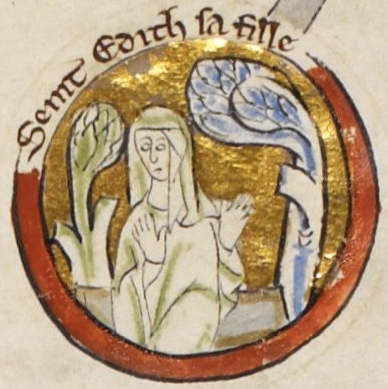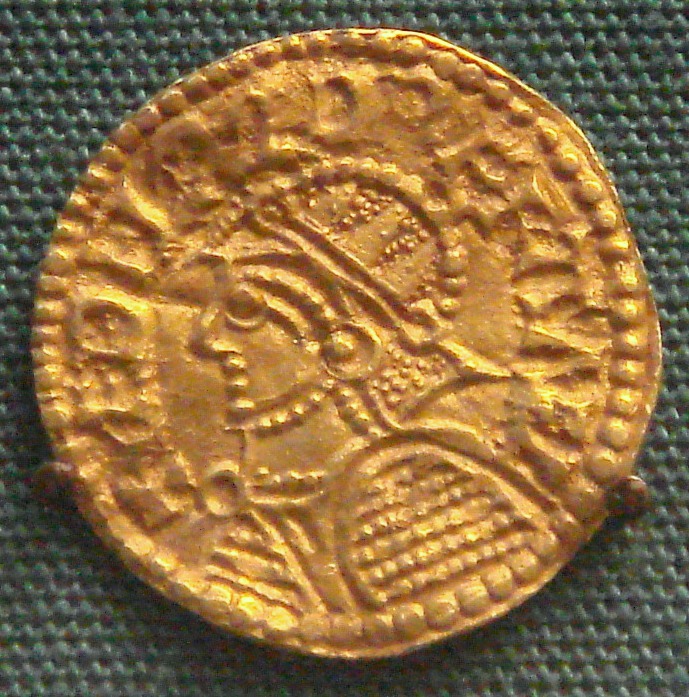|
Eadgyth (other)
{{hndis ...
Eadgyth (died 946) was a princess and wife of Holy Roman Emperor Otto I, Holy Roman Emperor. Eadgyth may also refer to: * Eadgyth of Aylesbury, saint and daughter of Penda of Mercia * Eadgyth of Polesworth (''fl''. early 10th century), thought to be a sister of King Æthelstan and wife to Sihtric Cáech * Eadgyth of Wilton (died c. 984), saint and daughter of Edgar the Peaceful of England * Eadgyth (''fl''. 10–11th century), daughter of King Æthelred the Unready by his first wife Ælfgifu of York and spouse to Eadric Streona See also * * Edith Edith is a feminine given name derived from the Old English word , meaning ''wealth'' or ''prosperity'', in combination with the Old English , meaning ''wiktionary:strife, strife'', and is in common usage in this form in English language, Englis ... [...More Info...] [...Related Items...] OR: [Wikipedia] [Google] [Baidu] |
Eadgifu
The name Eadgifu, sometimes Latinized as ''Ediva'' or ''Edgiva'', may refer to: * Eadgifu of Kent (died c. 966), third wife of king Edward the Elder, King of Wessex * Eadgifu of Wessex (902 – after 955), wife of King Charles the Simple * Eadgifu, Abbess of Leominster * Eadgifu the Fair (c. 1025 – c. 1086), a wealthy pre-Conquest landowner, first wife of Harold Godwinson Harold Godwinson ( – 14 October 1066), also called Harold II, was the last crowned Anglo-Saxon King of England. Harold reigned from 6 January 1066 until his death at the Battle of Hastings on 14 October 1066, the decisive battle of the Norman ... See also * Eadgyth, Old English form of the name Edith * Ealdgyth, Old English form of the name Aldith {{given name, cat=English feminine given names Feminine given names ... [...More Info...] [...Related Items...] OR: [Wikipedia] [Google] [Baidu] |
Ealdgyth (other)
The name Ealdgyth (; sometimes modernized to Aldith, may refer to * Ealdgyth, daughter of Uhtred the Bold, Earl of Northumbria (died 1016) and Ælfgifu who is a daughter of Æthelred II * Ealdgyth (floruit 1015–1016) (born c. 992), wife of Sigeferth and then of King Edmund Ironside * Ealdgyth, wife of the thane Morcar (died 1015) * Ealdgyth, daughter of Earl Ælfgar (fl. c. 1057 – 1066), wife of Gruffudd ap Llywelyn and later of Harold Godwineson * Edith Swanneck (c. 1025 – c. 1086), concubine of Harold Godwineson * Ealdgyth of Wallingford, daughter of Wigot and wife of Robert D'Oyly (died 1091) See also * Eadgyth (other), Old English form of the name (Edith Edith is a feminine given name derived from the Old English word , meaning ''wealth'' or ''prosperity'', in combination with the Old English , meaning ''wiktionary:strife, strife'', and is in common usage in this form in English language, Englis ...) * Eadgifu, sometimes Latinized as Ediva or Edgiva ... [...More Info...] [...Related Items...] OR: [Wikipedia] [Google] [Baidu] |
Edith Of Wilton
Edith of Wilton ( – ) was an English saint, nun and member of the community at Wilton Abbey, and the daughter of Edgar, King of England (r. 959–975) and Wulfthryth of Wilton, Saint Wulfthryth. Edith's parents might have been married and Edgar might have abducted Wulfthryth from Wilton Abbey, but when Edith was an infant, Wulfthryth returned with Edith and their marriage was dissolved. Edith and her mother remained at Wilton for the rest of their lives. Like her mother, Edith was educated at Wilton. From a young age, Edith chose to enter the religious life, although it is uncertain whether she became a nun or a secular member of the Wilton community. Goscelin, who completed her hagiography around 1080, reports that Edith "always dressed magnificently" because it reflected her status as a member of the royal family and because she was obliged to fulfil certain roles to ensure the continued royal patronage of the Wilton community. Goscelin based his ''Vita'' on the oral testimo ... [...More Info...] [...Related Items...] OR: [Wikipedia] [Google] [Baidu] |
Eadgyth
Edith of England, also spelt Eadgyth or Ædgyth (, ; 910–946), a member of the House of Wessex, was the East Frankish ( German) queen from 936, by her marriage to King Otto the Great. Life Edith was born to the reigning English king Edward the Elder by his second wife, Ælfflæd, and hence was a granddaughter of King Alfred the Great. She had an older sister, Eadgifu. She apparently spent her early years near Winchester in Wessex, moving about frequently with the court, and may have spent her later youth, with her mother, living for a time at a monastery. At the request of the East Frankish king Henry the Fowler, who wished to stake a claim to equality and to seal the alliance between the two Saxon kingdoms, her half-brother King Æthelstan sent his sisters Edith and Edgiva to Germany. Henry's eldest son and heir to the throne Otto was instructed to choose whichever one pleased him best. Otto chose Edith, according to Hrotsvitha a woman "of pure noble countenance, gracef ... [...More Info...] [...Related Items...] OR: [Wikipedia] [Google] [Baidu] |
Eadgyth Of Aylesbury
Eadgyth of Aylesbury also known as Eadridus was a Dark Ages Catholic saint from Anglo-Saxon England. History She is known to history mainly through the hagiography of the Secgan Manuscript, but also the ''Anglo-Saxon Chronicle'' She was the daughter of Penda of Mercia. One of her sisters was Eadburh of Bicester; the other, Wilburga, was married to Frithuwold of Chertsey. Wilburga's daughter St Osyth grew up in the care of her maternal aunts. A Saint Edith is also mentioned in ''Conchubran's Life of Saint Modwenna,'' a female hermit who supposedly lived near Burton-on-Trent. The text, written in the early 11th century, mentions a sister of King Alfred by the name of Ite, a nun who served as the Kings tutor and had a maidservant called Osid. Although an Irish nun called St Ita was active in the 7th century, Ite's name has been interpreted as "almost certainly a garbling of Edith" and that of Osid a rendering of Osgyth.Robert Bartlett, Geoffrey of Burton. Life and miracles ... [...More Info...] [...Related Items...] OR: [Wikipedia] [Google] [Baidu] |
Eadgyth Of Polesworth
Saint Edith of Polesworth (also known as Editha or Eadgyth; d. ?c.960s) is an Anglo-Saxon abbess associated with Polesworth (Warwickshire) and Tamworth (Staffordshire) in Mercia. Her historical identity and floruit are uncertain. Some late sources make her a daughter of King Edward the Elder, while other sources claim she is the daughter of Egbert of Wessex. Her feast day is 15 July. Identity Edith (''Ealdgyth'') is included in the first section of the late Old English saints' list known as ''Secgan'', which locates her burial place at Polesworth. The question of St Edith's historical identity is fraught with difficulties. As sister to a West-Saxon king The tradition which was written down at the monastery of Bury St Edmunds in the 12th century and was later re-told by Roger of Wendover (d. 1236) and Matthew Paris (d. 1259) asserts that she was a sister of King Æthelstan, who gave her in marriage to Sihtric Cáech, a Hiberno-Scandinavian king of southern Northumbria and Du ... [...More Info...] [...Related Items...] OR: [Wikipedia] [Google] [Baidu] |
Eadgyth Of Wilton
Edith of Wilton ( – ) was an English saint, nun and member of the community at Wilton Abbey, and the daughter of Edgar, King of England (r. 959–975) and Saint Wulfthryth. Edith's parents might have been married and Edgar might have abducted Wulfthryth from Wilton Abbey, but when Edith was an infant, Wulfthryth returned with Edith and their marriage was dissolved. Edith and her mother remained at Wilton for the rest of their lives. Like her mother, Edith was educated at Wilton. From a young age, Edith chose to enter the religious life, although it is uncertain whether she became a nun or a secular member of the Wilton community. Goscelin, who completed her hagiography around 1080, reports that Edith "always dressed magnificently" because it reflected her status as a member of the royal family and because she was obliged to fulfil certain roles to ensure the continued royal patronage of the Wilton community. Goscelin based his ''Vita'' on the oral testimony of the Wilton nun ... [...More Info...] [...Related Items...] OR: [Wikipedia] [Google] [Baidu] |
Æthelred The Unready
Æthelred II (,Different spellings of this king's name most commonly found in modern texts are "Ethelred" and "Æthelred" (or "Aethelred"), the latter being closer to the original Old English form . Compare the modern dialect word . ; ; 966 – 23 April 1016), known as Æthelred the Unready, was List of English monarchs, King of the English from 978 to 1013 and again from 1014 until his death in 1016. His epithet comes from the Old English word meaning "poorly advised"; it is a pun on his name, which means "well advised". Æthelred was the son of Edgar, King of England, King Edgar and Ælfthryth (wife of Edgar), Queen Ælfthryth. He came to the throne at about the age of 12, following the assassination of his elder half-brother, King Edward the Martyr. The chief characteristic of Æthelred's reign was conflict with the Danes (tribe), Danes. After several decades of relative peace, Danish raids on English territory began again in earnest in the 980s, becoming markedly more se ... [...More Info...] [...Related Items...] OR: [Wikipedia] [Google] [Baidu] |



